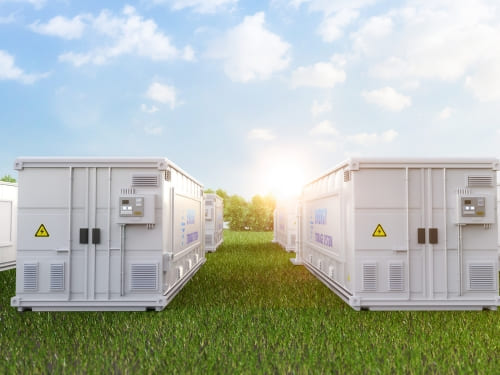In the realm of energy storage, the need for reliable and scalable solutions has become increasingly vital. Traditional methods, such as pumped hydroelectric storage and natural gas peaker plants, have served well in providing short-term energy backup. However, with the growing shift towards renewable energy sources like solar and wind, which are intermittent by nature, there arises a critical need for long-duration energy storage (LDES) solutions. This article explores the fundamental differences between LDES and traditional energy storage methods, focusing particularly on containerized battery systems as a prominent example of LDES.
Traditional Methods of Energy Storage
Traditionally, energy storage has been dominated by pumped hydroelectric storage and natural gas peaker plants:
- Pumped Hydroelectric Storage: This method involves using excess electricity from the grid during off-peak hours to pump water to an elevated reservoir. During peak demand periods, the water is released through turbines to generate electricity. It is effective for large-scale energy storage but is limited by geographical constraints and high upfront costs.
- Natural Gas Peaker Plants: These plants burn natural gas to generate electricity quickly during periods of high demand. While flexible and quick to deploy, they are fossil fuel-dependent and contribute to carbon emissions.
These methods excel in providing short bursts of energy or balancing supply and demand on a daily or weekly basis but fall short when it comes to storing energy for longer durations or managing seasonal variations in renewable energy generation.
Long-Duration Energy Storage (LDES)
Long-duration energy storage solutions are designed to store excess energy over extended periods, ranging from hours to days or even months. These technologies are crucial for stabilizing the grid, managing renewable energy intermittency, and enhancing energy resilience. One of the most promising advancements in LDES is containerized battery systems.
Containerized Battery Systems
Containerized battery systems represent a significant evolution in energy storage technology, offering several advantages over traditional methods:
- Scalability: Unlike pumped hydroelectric storage, which requires specific geographic conditions, containerized battery systems can be deployed almost anywhere. They are modular and scalable, allowing for easier expansion based on demand.
- Flexibility: These systems can charge and discharge electricity rapidly, making them ideal for supporting grid stability and responding to sudden changes in energy demand or supply from renewable sources.
- Cost-Effectiveness: While initial costs can be higher than traditional methods, the overall cost-effectiveness of containerized battery systems improves over time due to lower maintenance requirements and operational flexibility.
- Environmental Impact: Unlike natural gas peaker plants, containerized battery systems produce zero emissions during operation, contributing to cleaner air and reducing carbon footprints.
Applications and Future Outlook
Containerized battery systems are already being deployed in various applications:
- Grid Stability: They help smooth out fluctuations in renewable energy generation, ensuring a stable supply of electricity.
- Backup Power: They provide reliable backup power during grid outages or emergencies.
- Remote and Island Communities: These systems enable energy independence and resilience in remote or island communities, reducing reliance on imported fuels.
Looking ahead, the future of LDES is promising, driven by ongoing advancements in battery technology, cost reductions, and supportive policies promoting renewable energy integration. Innovations such as flow batteries, hydrogen storage, and thermal energy storage are also emerging as potential long-duration solutions, each with unique benefits and applications.
Conclusion
In conclusion, long-duration energy storage represents a paradigm shift in how we manage energy resources. By complementing traditional methods with innovative technologies like containerized battery systems, we can achieve a more sustainable and resilient energy infrastructure. As global efforts intensify to combat climate change and achieve decarbonization goals, investing in and scaling up long-duration energy storage solutions will be crucial in shaping the future of energy sustainability.
By understanding these differences and embracing technological advancements, we can build a more robust and adaptable energy ecosystem capable of meeting the challenges of tomorrow.


